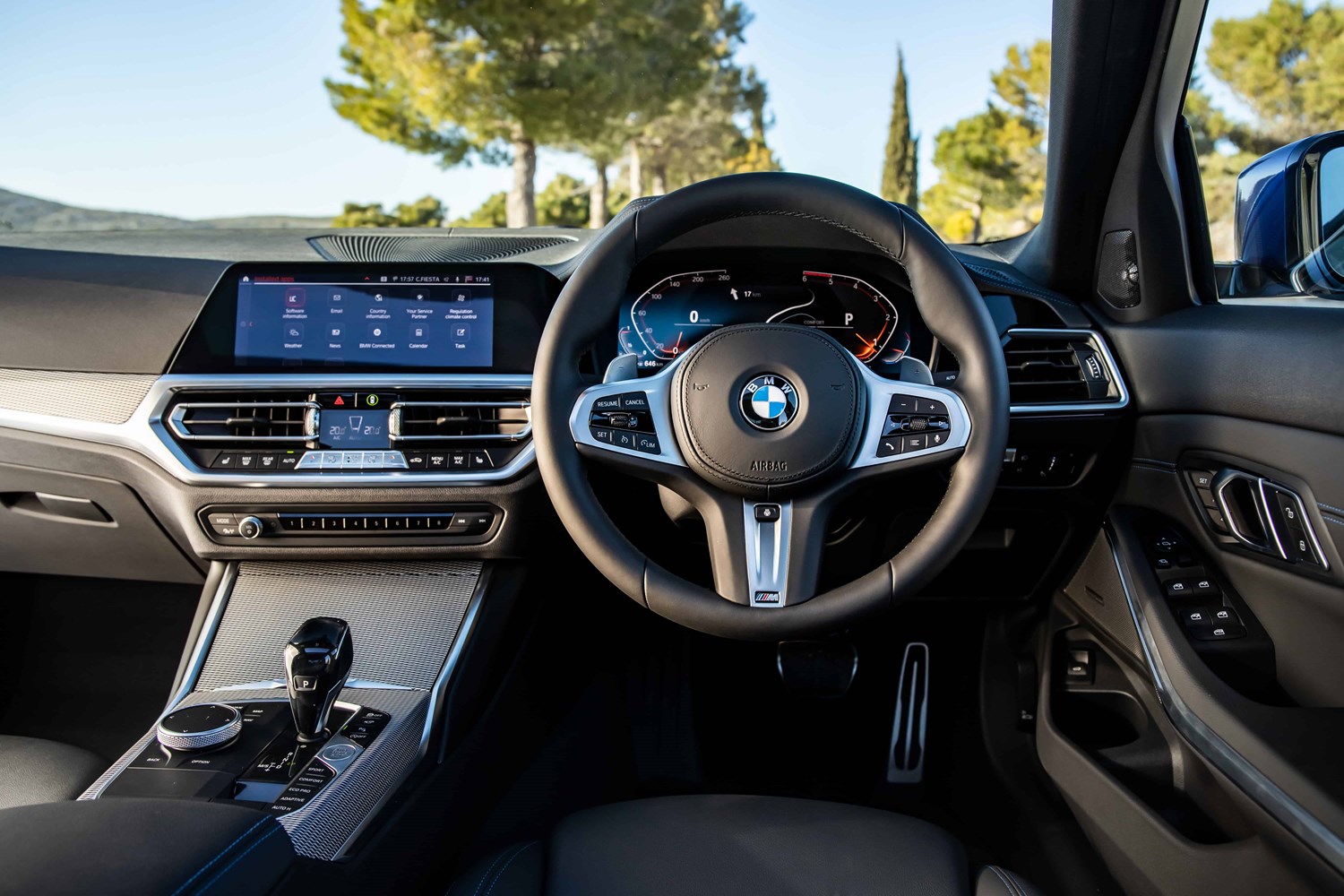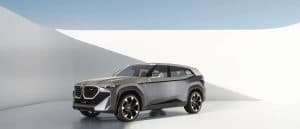History
The BMW 3 Series is fast approaching its 45th birthday. It was first launched in 1975 as a successor to the ‘02’ series and while it was originally offered as a two-door saloon, the range expanded to include a four-door saloon, coupe, convertible, estate and hatchback.
Its combination of solid build quality, excellent driving manners aided by rear-wheel drive and the latest technology have all helped make it BMW best-selling model – in fact the 3 series accounts for around 30% of all BMW car sales globally.
Now in its seventh generation, the 3 Series is now more technologically advanced than ever before, and with a new breed of powerplants including a plug-in hybrid version, there’s now even more choice.
But while the 3 Series has been evolving, so has the competition, with models like the Audi A4, Mercedes-Benz C-Class and Jaguar XE also stepping up their game. The main change to the 3 Series line-up, though, is that the coupe, convertible and four-door Gran Coupe versions are now badged 4 Series. That means that the only options for the 3 Series are a four-door saloon or five-door estate, which is badged as a ‘Touring’.
Latest model
While the seventh-generation version, codenamed G20, may be a long way from the original, BMW has managed to keep much of the DNA. It remains a driver focussed machine, with power fed to the rear wheels making it beautifully balanced and leaving the front wheels to focus on the business of steering. There’s also the option of xDrive – BMW’s clever four-wheel drive system – as well as a healthy mix of power plants that include petrol, diesel or even a plug-in hybrid that promises electric power of around 30 miles.
What’s also great about the 3 Series is the quality of the cabin, not only the cabin materials, but the technology too. The latest models get highly intuitive infotainment systems and while prices are slightly higher than the previous generation, standard equipment is also improved.
Value for money
The 3 Series isn’t cheap, but when you look at its main rivals, it’s pretty evenly priced. An entry-level SE saloon will set you back just over £30,000, and that will include standard kit such as alloy wheels, LED lights, and an 8.8-inch touchscreen infotainment system which controls DAB radio, satellite navigation and phone controls. However, it is very easy to go a bit crazy with the optional extras which will soon find the initial price tag increase by a few thousand pounds, so picking your trim level wisely will really dictate whether the model you go for offers good value for money.
Upgrade to the mid-range Sport trim, our preferred choice, and while prices climb slightly, so does the equipment list. There are a few aesthetic changes that give the 3 Series a sportier stance, but you also get larger alloy wheels, leather seats as well as three zone climate control.
If you want to opt for an even sportier look, then the range topping M Sport spec will be the one to go for as this comes armed with more kit, more aggressive looks and a stiffer suspension set-up. But it’s worth noting that if you go for this trim, then we’d definitely recommend choosing the option adaptive suspension as the ride might be unbearably firm without it.
Given the popularity of the 3 Series, there is certainly no shortage available, with plenty also being available for less than £1,000 if you’re wanting a cheap runabout. But on the latest generation, prices currently start from around £21,000, which will buy a one-year old example with 10,000 miles on the clock. M Sport examples are the more desirable ones, so expect prices for these to start from around £23,000.
Looks and image
The 3 Series is unmistakably a BMW, it gets the trademark kidney grille with single surround for the two elements, new T-shaped air intakes and twin-pipe exhaust system at the rear. It certainly looks more elegant than ever before and more exciting than the previous generation which was a bit more understated especially alongside the Mercedes-Benz C-Class and Audi A4.
Inside, the cabin is a vast improvement on the previous generation, as the centre console arcs slightly towards the driver to give a more focussed feel. While basic spec models get a cloth trim, mid-spec upwards feature leather seats which give it a more upmarket look.
At the top of the centre console is an 8.8-inch infotainment screen which can be operated via touchscreen or using BMW’s iDrive control dial next to the gearstick. Pick the M Sport and this grows to 10.3 inches.
Space and practicality
As is often the case with latest-generation models, the 3 Series is bigger than the model it replaces, which means that all occupants won’t need to worry about leg, head or shoulder room. In fact, the 3 Series offers more space than rivals from Audi and Mercedes-Benz.
Boot space is limited because of the limitations of a saloon, but the rear seats do still fold flat 40:20:40 and are aided by levers in the boot. If you are looking for more space, the Touring would be a better option. The boot in the saloon is a good size and shape and bigger than the A4 or C-Class but significantly smaller than rivals like the Skoda Superb or Volkswagen Passat. It’s also worth noting that if you’re looking at the hybrid model, then boot space is restricted by a third to make way for battery storage, though not significantly.
What’s under the bonnet?
One of the 3 Series’ strongest selling points has been its range of punchy and driver orientated engines, and this latest version is no different. There’s a healthy mix of petrol and diesels as well as a plug-in hybrid too.
On the petrol front, the range begins with the 318i, which utilises a 154bhp 2.0-litre unit. If you fancy a bit more power, choose the 320i, which sees the power increased to 181bhp. You can have this with rear- or xDrive all-wheel-drive. The former is quickest, though, as it can accelerate from 0-60mph in 6.9 seconds.
Higher up the line-up, there is the 330i, which features a 254bhp 3.0-litre petrol engine that can accelerate to 60mph in 5.6 seconds. Right at the top of the line-up is the punchy M340i, which comes with a 369bhp 3.0-litre unit that can sprint from 0-60mph in a rapid 4.2 seconds.
On the diesel front, the line-up is equally extensive. The range starts with a 148bhp 2.0-litre turbodiesel badged 318d which is a capable unit, and the only 3 Series you can choose with a six-speed manual gearbox – every other version utilises an automatic transmission. But if you want a good all-rounder, then the 187bhp 320d is worth putting on your list, and it continues to prove popular.
Two more powerful diesels are available – the 330d and M340d. The latter produces 261bhp from its 3.0-litre engine, while the ‘M’-badged model delivers a superb mix of performance and efficiency. It produces 335bhp from its tuned 3.0-litre engine, and can reach 0-60mph in just 4.4 seconds.
There’s also the 330e plug-in hybrid, which mates the 320i engine together with an electric motor and battery pack to produce a combined 288bhp.
Running costs
While the 3 Series is a car that’s pleasing to drive, it’s also good on the wallet too, with a good spread of economical engines across the board. Even the M340i will return an average fuel economy of around 35mpg.
It’s also good news for private and company car drivers with low CO2 emissions. If you’ve got one eye on what your spending, then the 320d with mild hybrid technology will average around 57mpg and CO2 emissions between 127-134 g/km of CO2, if you go for the four-wheel drive xDrive version, then this damages those figures slightly.
If you want a bit more oomph, then the 261bhp 330d is the one to go for, with an average economy in the mid 40s and emissions between 133-138 g/km. If you prefer petrol, then the 318i is the most frugal with a fuel economy of around 42mpg and emissions between 149-154g/km of CO2.
The 330e plug-in hybrid can travel for around 41 miles on electric mode alone, that means it has extremely impressive CO2 emissions of just 37g/km and economy figures between 176 – 201mpg. You just need to plug in regularly to make the most of its efficiency.
Things to look out for
As with the previous version it’s covered by a three-year, unlimited mile warranty, but history proves that the 3 Series should be pretty reliable.
In terms of options, it’s worth checking whether higher powered versions have an optional adaptive suspension as the ride can be pretty firm without it. It has a solid reliability record, too, but it’s worth taking out an aftermarket warranty once the manufacturer’s one runs out, as its premium parts won’t be cheap.
Rivals
The BMW 3 Series’ main rivals include the Mercedes-Benz C-Class and Audi A4, as well as the Jaguar XE and Alfa Romeo Giulia.
Also, the 3 Series faces competition from range-topping large family offerings like the Ford Mondeo, Skoda Superb or Volkswagen Passat. They offer just as much in terms of equipment levels, and in some cases even more, but can’t match the driving manners or badge kudos.
Depreciation
Anyone looking for a BMW 3 Series will be pleased to hear that it’s renowned for holding its value well. Plus, with them being so popular, it also means that there are plenty of well-priced, high-spec, slightly older versions available too. Normally the higher-powered diesels hold onto their value the strongest.





